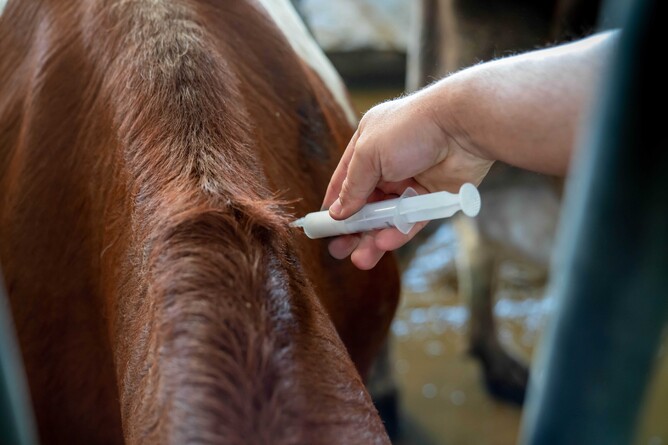This season has been a tough one for mastitis. We have been seeing higher cell counts on most farms compared to the previous season.
Both clinical and subclinical mastitis impact animal welfare, have significant costs, and lower sustainability.
There are now two vaccines available to help boost cow immunity to mastitis, with the aim of reducing the usage of antibiotics and the amount of milk down the drain.
The UBAC® vaccine targets Gram-positive bacteria, including Streptococcus uberis. It was introduced to the New Zealand market in 2024.
Streptococcus uberis is the predominant cause of mastitis on New Zealand dairy farms, and this is reflected in the Mastatest results we see in-clinic. The usual prevention methods, like internal teat sealant, are not always available as a tool to us here on the West Coast – especially for those wishing to supply colostrum commercially to Westland. The UBAC vaccine can offer protection not just during spring, but throughout the whole year.
International studies have shown that the UBAC vaccine can reduce the incidence of Streptococcus uberis infections by up to 50%. Additionally, the cows that do still get mastitis from Strep. uberis are not affected as badly and recover quicker (i.e. only taking three days of treatment instead of six), therefore saving on the amount of antibiotic used and getting milk back in the vat faster.
The standard vaccination protocol for UBAC includes an initial sensitiser vaccine, followed by a booster shot four weeks later. Another booster is then required every four months. This schedule needs to be repeated annually to maintain high levels of protection.
For cows, we’d recommend the first vaccination 6-8 weeks before your planned dry off, the first booster four weeks later, the second booster four months later, and then continued four-monthly boosters. However, this vaccination programme is able to be tailored to suit your herd’s requirements. You could start at any time of the year when it best works in with other herd management tasks.
For heifers, we’d recommend the first vaccination seven weeks before their planned start of calving, the first booster four weeks later (three weeks pre-calving), and the second booster just before mating.
For another option, there’s also the STARTVAC® vaccine, which combats Staphylococcus aureus and E. coli. It’s an inactivated vaccine.
Staphylococcus aureus is a highly contagious mastitis-causing pathogen, and often leads to chronic infections that are difficult to cure.
A study conducted across 15 farms in three key dairy regions of New Zealand investigated the role of STARTVAC in managing mastitis. The findings suggest that vaccination with STARTVAC positively influences udder health, making it a valuable component of mastitis management strategies in New Zealand dairy herds.
This vaccine requires an identical vaccination protocol as the UBAC vaccine, and we’d recommend similar timings.
As part of our rollout of the UBAC vaccine, we are offering the third booster FREE for all animals enrolled this season on the 3-shot UBAC vaccination programme!
Have a chat with your KeyVet about whether it would be worth doing on your farm, and the best vaccination timings for you and your stock.

